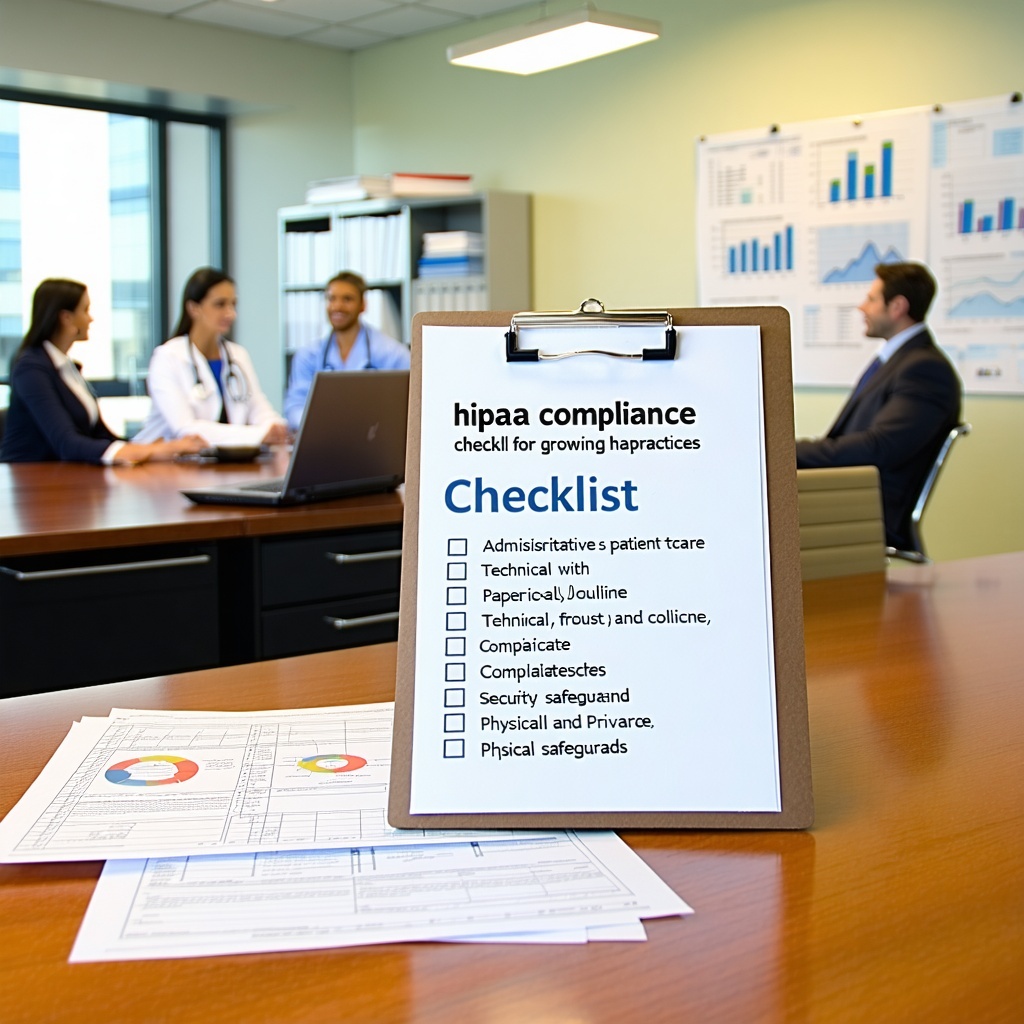HIPAA Compliance Checklist for Growing Healthcare Practices
As your medical practice expands, so do the challenges of managing compliance. HIPAA isn’t just a legal obligation — it’s a critical part of protecting your patients’ trust and your clinic’s reputation.
Whether you're a solo physician scaling up or a mid-sized practice with new locations, staying HIPAA-compliant requires more than secure passwords and locked file cabinets. This checklist will help you cover your bases across administrative, technical, and physical safeguards — and prepare you for audits or growth transitions.
✅ Administrative Safeguards
These are your practice’s policies, procedures, and people-focused controls.
-
Conduct a Risk Assessment
Identify vulnerabilities in your systems, workflows, and third-party vendors. -
Develop a Written HIPAA Policy
Outline how your practice protects ePHI (electronic Protected Health Information). -
Train All Employees Annually
Include role-based training for front desk staff, nurses, and administrative teams. -
Appoint a HIPAA Privacy & Security Officer
Even in small practices, someone should be designated to oversee compliance. -
Establish a Breach Notification Process
Define how you will detect, report, and respond to incidents within the 60-day window.
✅ Technical Safeguards
These focus on your IT systems, devices, and data handling procedures.
-
Enable Multi-Factor Authentication (MFA)
For all systems that access ePHI — including email, cloud platforms, and EHRs. -
Use Encryption at Rest and in Transit
Encrypt all devices, servers, and data backups that store patient information. -
Regularly Patch and Update Systems
Automate OS and software updates to protect against known vulnerabilities. -
Set Up Role-Based Access Controls
Staff should only access the information they need to do their job. -
Deploy Endpoint Detection & Response (EDR)
Proactively detect and isolate threats on devices like laptops and tablets.
✅ Physical Safeguards
Protecting the physical environment where data is accessed and stored.
-
Restrict Access to Sensitive Areas
Server rooms, storage cabinets, and admin-only workstations should be locked and monitored. -
Implement Device Management Policies
Create guidelines for mobile phones, tablets, and laptops used by staff. -
Log and Monitor Facility Entry Points
Use access cards or key logs to track who enters areas where PHI is stored. -
Secure Workstations and Screens
Use privacy filters, automatic screen locks, and secure printers.
Bonus: Prepare for HIPAA Audits
-
Keep Documentation Ready
Risk assessments, policies, and training logs should be easily accessible. -
Run Internal Audits
Test your own compliance annually — or better yet, work with a compliance-focused IT partner.
Final Thoughts
HIPAA compliance isn’t just a checkbox — it’s an ongoing process. The more your practice grows, the more critical it becomes to have scalable IT policies and a proactive compliance strategy.
At AE Technology Solutions, we help healthcare practices implement HIPAA-compliant infrastructure, train their staff, and stay prepared for audits — so you can focus on what matters most: patient care.
💬 schedule a free HIPAA readiness consultation today.
.png?width=150&height=66&name=logo_ae_tech_2-(1).png)
.png?width=200&height=66&name=logo_ae_tech_2-(1).png)

Comments